 Before Galileo Galilei and Sir Isaac Newton, the Lakota studied astronomy. Many indigenous peoples did. They were natural scientists. What sets indigenous “ethnoastronomy” apart from mainstream western astronomy is native peoples didn’t feel the need to separate their spiritual beliefs from other areas of their lives. The Lakota truly believed everything was interconnected. As a result, hard science observations and discoveries deciphered by Lakota over millennia are always intermingled with their spiritual beliefs, practices and ceremonies. In spite of frequent attempts by the western establishment to destroy such traditional knowledge, some has survived. Like the ancient Greeks, Lakota named stars, constellations, and other heavenly bodies. Legends often relayed morals, as well as valid scientific information. The legend of Lakota hero Fallen Star tells us he was the son of the North Star and a Lakota woman. When his mother fell back to Earth through a hole she had dug in the sky while digging for turnips, he was adopted by the Lakota people. He matured quickly, and before long he realized his destiny was to protect the Lakota. Fallen Star rescued seven Lakota maidens from a red eagle by placing them in the night sky as Wicincala Sakowin, the Seven Little Girls, known to the Greeks as The Pleiades. Today, Fallen Star is said to inhabit the night sky near Wanagi Tacanku, or the “Trail of Spirits”—called The Milky Way by westerners. According to Lakota belief, Wanagi Tacanku is where Lakota go after their physical bodies die. Lakota ceremonies keep the people aligned with the cosmos. During Sundance, pierced dancers are connected to a central tree of Life, that connects them directly to The Great Mystery above. Tipis and lodges were designed to mirror the rising sun and stars. To the Lakota, the Black Hills of South Dakota also mirror the stars. The ceremonial center of the Black Hills is “Old Baldy.” At present, there is no star body that correlates to Old Baldy’s location, but astronomers have noted that light from the Crab Nebula Supernova that reached Earth in the 11thcentury did. Medicine wheels were important astronomical instruments used by the Lakota. One assembled near the Bighorn Mountains of Wyoming around 1760 was used by ancestral Lakota to watch the summer solstice sunrise, and the dawn of stars like Aldeberan and Rigel. Historically, western science has questioned the validity of indigenous science and astronomy, in part because it aligns nature-based spirituality with science. Slowly, this closed mindset is changing. In my opinion, western science is beginning to draw conclusions that have already been inferred by Indigenous ancients thousands of years ago. Modern science postulates that our universe was created in an event referred to as “The Big Bang.” According to this theory, the universe sprang from nothingness when a zone of infinite density, called a “singularity,” began to cool and expand. A Large Hadron Collider (LHC) was constructed underground in Europe to run experiments that will answer some of biggest questions in Particle Physics. Simulations of conditions similar to The Big Bang event can be created within it and studied. Supersymmetric particles can be tested within the LHC to reveal the make-up of dark matter. Everything we see in the Universe, including you, the coffee in my cup, and the roof overhead, is made up of ordinary particles. These particles are form matter, and represent 4 percent of the Universe. Ninety-six percent of the universe is made up of dark matter and dark energy, meaning it’s invisible. Dark matter is incredibly difficult to detect and study. Initial proof of dark matter/energy was based on the gravitational forces they exert. Still, we don’t know what it is. Hence the reason for creating a machine like the LHC to investigate it. It’s been speculated that dark matter and energy may eventually connect science to mysticism if or when science reveals plausible evidence that dark matter contains multiple dimensions or a spiritual realm presently unseen to the majority of us. The Higgs-Boson has been introduced by scientists as the sub-atomic particle that gives mass to everything in the universe. In other words, scientists believe the Higgs-Boson is in all things, connects all things, and by giving everything mass, essentially creates all things. No wonder Higgs-Boson has been termed “The God Particle.” Researchers utilizing The Large Hadron Collider announced in December that they may have caught a first glimpse of The God Particle, and definitive proof of its existence will likely be disclosed in 2012. While institutions of Western science will deny that any forthcoming discoveries they make bear any likeness to indigenous teachings, indigenous scientists realize the difference is only a matter of syntax and perspective. We are all connected. The difference between my ancestor’s belief in this and a scientists discovery as such is my ancestors didn’t have to build a $9 billion dollar piece of equipment to know it, and modern scientists term this interconnectedness of creation Higgs-Boson, The God Particle. Likewise, the Lakota were aware of the existence of the invisible Wanagi Tacanku, or “Trail of Spirits,” before modern science ever defined the term dark matter. Be patient. It takes them awhile to catch on.
Before Galileo Galilei and Sir Isaac Newton, the Lakota studied astronomy. Many indigenous peoples did. They were natural scientists. What sets indigenous “ethnoastronomy” apart from mainstream western astronomy is native peoples didn’t feel the need to separate their spiritual beliefs from other areas of their lives. The Lakota truly believed everything was interconnected. As a result, hard science observations and discoveries deciphered by Lakota over millennia are always intermingled with their spiritual beliefs, practices and ceremonies. In spite of frequent attempts by the western establishment to destroy such traditional knowledge, some has survived. Like the ancient Greeks, Lakota named stars, constellations, and other heavenly bodies. Legends often relayed morals, as well as valid scientific information. The legend of Lakota hero Fallen Star tells us he was the son of the North Star and a Lakota woman. When his mother fell back to Earth through a hole she had dug in the sky while digging for turnips, he was adopted by the Lakota people. He matured quickly, and before long he realized his destiny was to protect the Lakota. Fallen Star rescued seven Lakota maidens from a red eagle by placing them in the night sky as Wicincala Sakowin, the Seven Little Girls, known to the Greeks as The Pleiades. Today, Fallen Star is said to inhabit the night sky near Wanagi Tacanku, or the “Trail of Spirits”—called The Milky Way by westerners. According to Lakota belief, Wanagi Tacanku is where Lakota go after their physical bodies die. Lakota ceremonies keep the people aligned with the cosmos. During Sundance, pierced dancers are connected to a central tree of Life, that connects them directly to The Great Mystery above. Tipis and lodges were designed to mirror the rising sun and stars. To the Lakota, the Black Hills of South Dakota also mirror the stars. The ceremonial center of the Black Hills is “Old Baldy.” At present, there is no star body that correlates to Old Baldy’s location, but astronomers have noted that light from the Crab Nebula Supernova that reached Earth in the 11thcentury did. Medicine wheels were important astronomical instruments used by the Lakota. One assembled near the Bighorn Mountains of Wyoming around 1760 was used by ancestral Lakota to watch the summer solstice sunrise, and the dawn of stars like Aldeberan and Rigel. Historically, western science has questioned the validity of indigenous science and astronomy, in part because it aligns nature-based spirituality with science. Slowly, this closed mindset is changing. In my opinion, western science is beginning to draw conclusions that have already been inferred by Indigenous ancients thousands of years ago. Modern science postulates that our universe was created in an event referred to as “The Big Bang.” According to this theory, the universe sprang from nothingness when a zone of infinite density, called a “singularity,” began to cool and expand. A Large Hadron Collider (LHC) was constructed underground in Europe to run experiments that will answer some of biggest questions in Particle Physics. Simulations of conditions similar to The Big Bang event can be created within it and studied. Supersymmetric particles can be tested within the LHC to reveal the make-up of dark matter. Everything we see in the Universe, including you, the coffee in my cup, and the roof overhead, is made up of ordinary particles. These particles are form matter, and represent 4 percent of the Universe. Ninety-six percent of the universe is made up of dark matter and dark energy, meaning it’s invisible. Dark matter is incredibly difficult to detect and study. Initial proof of dark matter/energy was based on the gravitational forces they exert. Still, we don’t know what it is. Hence the reason for creating a machine like the LHC to investigate it. It’s been speculated that dark matter and energy may eventually connect science to mysticism if or when science reveals plausible evidence that dark matter contains multiple dimensions or a spiritual realm presently unseen to the majority of us. The Higgs-Boson has been introduced by scientists as the sub-atomic particle that gives mass to everything in the universe. In other words, scientists believe the Higgs-Boson is in all things, connects all things, and by giving everything mass, essentially creates all things. No wonder Higgs-Boson has been termed “The God Particle.” Researchers utilizing The Large Hadron Collider announced in December that they may have caught a first glimpse of The God Particle, and definitive proof of its existence will likely be disclosed in 2012. While institutions of Western science will deny that any forthcoming discoveries they make bear any likeness to indigenous teachings, indigenous scientists realize the difference is only a matter of syntax and perspective. We are all connected. The difference between my ancestor’s belief in this and a scientists discovery as such is my ancestors didn’t have to build a $9 billion dollar piece of equipment to know it, and modern scientists term this interconnectedness of creation Higgs-Boson, The God Particle. Likewise, the Lakota were aware of the existence of the invisible Wanagi Tacanku, or “Trail of Spirits,” before modern science ever defined the term dark matter. Be patient. It takes them awhile to catch on.
About the Author:
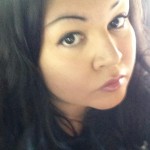 Ruth Hopkins (Sisseton-Wahpeton/Mdewakanton/Hunkpapa) is a writer, speaker,former science professor and tribal attorney. She is a columnist for Indian Country Today Media Network and LastRealIndians.com. Ruth may be reached via Twitter or by email at cankudutawin@hotmail.com.
Ruth Hopkins (Sisseton-Wahpeton/Mdewakanton/Hunkpapa) is a writer, speaker,former science professor and tribal attorney. She is a columnist for Indian Country Today Media Network and LastRealIndians.com. Ruth may be reached via Twitter or by email at cankudutawin@hotmail.com.



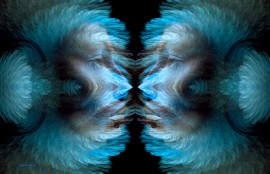



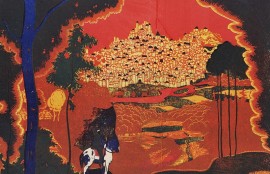
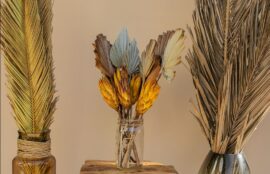
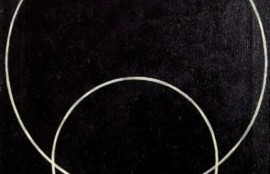

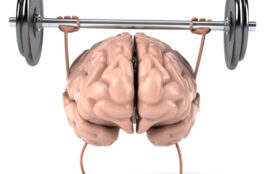
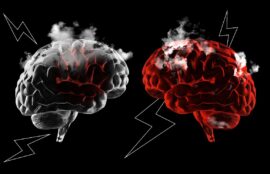

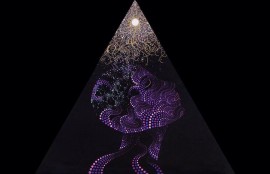


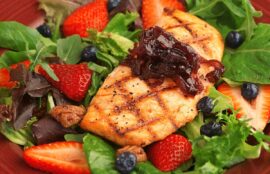
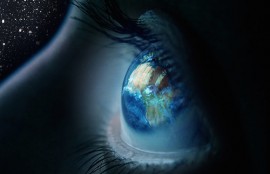
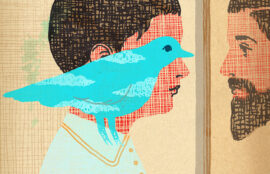
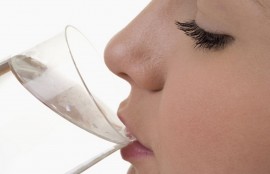

you might wan to read “I Energy – on cosmic consciousness, quantum physics and old shamanism” which talks about this also. http://www.blurb.co.uk/b/6246736-i-energy